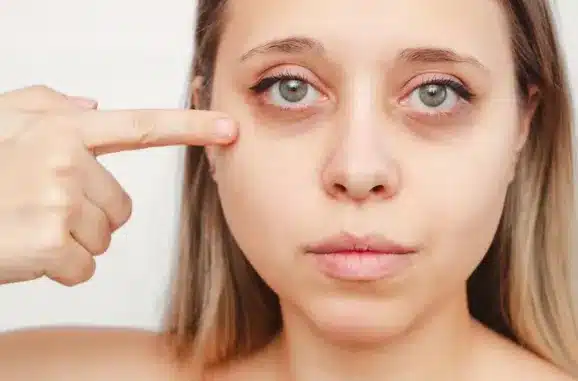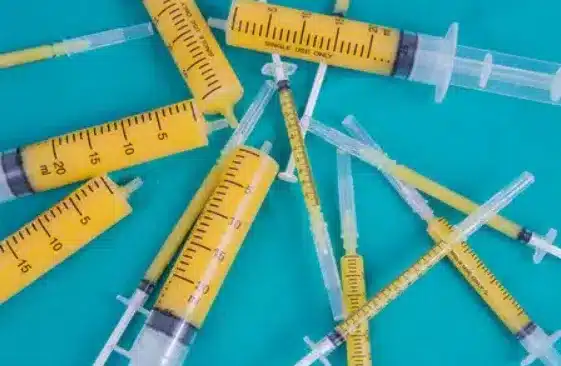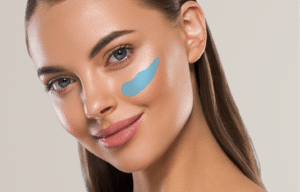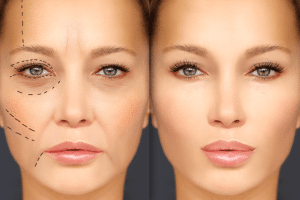Under Eye Fat Transfer, a form of fat grafting, has emerged as a popular cosmetic procedure for facial rejuvenation and aesthetic enhancement, particularly in addressing hollow under eyes. This innovative technique involves transferring fat from one area of the body to the under-eye region to restore volume and improve facial contours. By providing natural-looking results and long-lasting benefits, under-eye fat transfer offers a versatile solution for individuals seeking to rejuvenate their appearance and diminish the appearance of hollow under eyes.
Fat Transfer Under Eyes: Rejuvenating Your Under Eye Area
The under-eye area is prone to developing signs of aging, such as hollowing, loss of volume, and dark circles. These changes can make a person look tired and aged beyond their years. Under eye fat transfer is an innovative solution that addresses these concerns by using a patient’s fat cells to restore volume and improve the overall appearance of the under eye area.
Different Types of Under Eye Fat Transfer
There are different types of under eye fat transfer techniques used by surgeons. The most common methods include:
- Traditional Fat Transfer: This technique involves the removal of excess fat from the patient’s body, typically from areas such as the abdomen or thighs, using liposuction. The harvested fat cells are then purified and injected into the under eye area to restore volume and reduce hollowing.
- Microfat Transfer: In this method, smaller amounts of fat are harvested and injected using fine cannulas or needles. Microfat transfer is ideal for patients requiring subtle enhancements or minimal volume loss in the under eye area.
- Nano Fat Transfer: Nano fat transfer involves the transfer of tiny amounts of fat cells, along with stem cells and growth factors, to rejuvenate the under eye area. This technique suits patients with fine lines, wrinkles, and mild skin laxity.
Clinic contact number: +989371200167
Under Eye Fat Transfer: Step-by-Step Procedure
The under eye fat transfer procedure typically follows these steps:
- Consultation: During the initial consultation, you will discuss your concerns and aesthetic goals with a qualified plastic surgeon. They will assess your suitability for the procedure and explain it in detail.
- Anesthesia: Local anesthesia or twilight sedation may be administered to ensure your comfort throughout the procedure.
- Fat Harvesting: Liposuction techniques harvest Excess fat from a donor site. The most commonly used donor sites include the abdomen, thighs, or hips.
- Fat Purification: The harvested fat cells are processed to remove impurities, excess fluids, and damaged cells. This purification step ensures that only healthy fat cells are used for the transfer.
- Injection: The purified fat cells are carefully injected into the under eye area using small cannulas or needles. The surgeon strategically places the fat cells to restore volume and achieve a natural-looking result.
- Recovery: After the procedure, you may experience swelling, bruising, and mild discomfort. The recovery period varies from person to person but typically lasts a few days to a week.
Under eye fat transfer is a cosmetic procedure that involves transferring fat from one body area to the under-eye region for rejuvenation.
10 Benefits of Under Eye Fat Transfer
Under eye fat transfer offers several advantages compared to other rejuvenation procedures. Some of the key benefits include:
Eyelid surgery, also known as blepharoplasty, is a cosmetic procedure that focuses on improving the appearance and function of the eyelids. The eyes are often considered one of the face’s most prominent and expressive features, and eyelid surgery can enhance their overall aesthetic appeal while addressing functional issues such as drooping or sagging eyelids.
- Natural Results: Using your fat cells ensures a natural-looking outcome, as the transferred fat integrates seamlessly with your existing tissue.
- Long-lasting Results: The transplanted fat cells have the potential to survive in their new location, providing long-lasting volume restoration.
- Improved Eye Appearance: Under eye fat transfer effectively reduces the appearance of hollowing and dark circles, resulting in a more youthful and refreshed appearance.
- Minimally Invasive: The procedure requires small incisions for fat harvesting and injection, reducing the risk of visible scarring.
- Reduced Allergic Reactions: Since your fat cells are used, synthetic fillers have a significantly lower risk of allergic reactions.
- Enhanced Skin Quality: Fat transfer can improve the quality of the overlying skin in the under-eye area, reducing fine lines, wrinkles, and crepiness.
- Versatility: Under eye fat transfer can be combined with other procedures, such as eyelid surgery, to achieve comprehensive rejuvenation of the eye area.
- No Downtime: While some swelling and bruising may occur, the recovery time for under eye fat transfer is generally shorter than more invasive surgical procedures.
- Minimal Scarring: The small incisions made for fat harvesting and injection are typically hidden in natural creases or under the eyelashes, resulting in minimal visible scarring.
- Enhanced Self-Confidence: By addressing under eye concerns, fat transfer can boost your self-confidence and help you feel more comfortable and satisfied with your appearance.
When fat injections are used under the eyes to fill out hollow areas around the eyes it helps to create fuller looking eyes and give the face a youthful look. Dr Kopelman.
10 Risks of Under Eye Fat Transfer
Although under eye fat transfer is generally safe, like any medical procedure, there are potential risks and complications to be aware of. These may include:
- Swelling and Bruising: Temporary swelling and bruising are expected after the procedure and usually subside within a few days or weeks.
- Infection: Although rare, there is a risk of infection at the injection or liposuction sites. Following your surgeon’s instructions for postoperative care is essential to minimize this risk.
- Fat Absorption: In some cases, the body may reabsorb some transferred fat cells, reducing the volume over time. This can be mitigated by injecting slightly fatter than required.
- Asymmetry: There is a possibility of slight asymmetry in the under-eye area, either due to uneven fat distribution or individual healing processes.
- Irregularities: Occasionally, lumps, bumps, or irregularities may develop in the treated area. These can often be corrected with subsequent touch-up procedures.
- Under correction or Overcorrection: Achieving the desired results requires a delicate balance. In some cases, the under-eye area may be under corrected or overcorrected, necessitating additional procedures for refinement.
- Visibility of Fat Grafts: In rare instances, the transferred fat cells may become visible or palpable under the skin, resulting in a lumpy appearance. This can usually be addressed with revision procedures.
- Bleeding or Hematoma: While uncommon, bleeding or hematoma (accumulation of blood) may occur at the injection or liposuction sites, requiring medical attention.
- Skin Discoloration: In rare cases, the skin around the under-eye area may experience temporary or permanent discoloration, such as hyperpigmentation or hypopigmentation.
- Rare Complications: Although extremely rare, potential complications include blood vessel damage, necrosis (tissue death), or allergic reactions. These risks can be minimized by choosing a skilled and experienced surgeon.
-
Under eye fat transfer is a popular cosmetic treatment due to its long lasting results.
Preparing for and Recovering from Under Eye Fat Transfer
To ensure a successful under eye fat transfer procedure and optimize your recovery, it is important to follow pre-and post-operative instructions provided by your surgeon. Some general guidelines include the following:
Before the Procedure
Before undergoing an under-eye fat transfer procedure, schedule a consultation with a board-certified plastic surgeon to discuss goals, medical history, and prepare for pre-operative instructions.
Consultatio
Schedule a consultation with a board-certified plastic surgeon specializing in under-eye fat transfer to discuss your goals, expectations, and medical history. Use this opportunity to ask questions and address any concerns you may have about the procedure.
Clinic contact number: +989371200167
Medical evaluation
Your surgeon will perform a thorough medical evaluation to assess your suitability for the procedure. Be prepared to disclose any medications you are taking, past surgeries, and medical conditions.
Stop smoking
If you smoke, your surgeon may advise you to quit smoking several weeks before the procedure. Smoking can impair healing and increase the risk of complications.
After the Procedure
After undergoing an under-eye fat transfer procedure, it’s essential to take proper care of yourself during the recovery period to ensure optimal results. Here’s what to expect and how to manage your recovery:
Immediate post-operative care
After the procedure, your surgeon will provide instructions for immediate post-operative care. This may include applying cold compresses to reduce swelling and discomfort, keeping your head elevated while resting, and avoiding strenuous activities.
Managing discomfort
It’s common to experience some discomfort, swelling, and bruising in the treated area. Your surgeon may prescribe pain medication to help manage any discomfort. Additionally, following a healthy diet rich in fruits, vegetables, and protein can aid in the healing process.
Protecting the treated area
It’s important to protect the treated area from excessive sunlight, irritation, and trauma during the recovery period. Your surgeon may recommend wearing sunglasses and avoiding rubbing or touching the eyes to prevent any damage to the delicate tissues.
Deciding between a brow lift (browplasty) and eyelid surgery (blepharoplasty) hinges on your aesthetic goals, particularly regarding facial symmetry and the definition of the eyelid crease. Browplasty elevates the eyebrows to refresh the upper face, while blepharoplasty corrects issues in the eyelids, enhancing the eye’s appearance and function. The choice significantly impacts facial harmony, making it crucial to understand each procedure’s benefits in achieving a balanced and rejuvenated look.

A Closer Look at the Rising Popularity of Under-Eye Fat Transfer Procedure
In the field of under-eye fat transfer, prominent figures like Dr. Samuel Lin from Harvard Medical School and Dr. Jeffrey Kenkel from the University of Texas Southwestern Medical Center have made significant contributions to advancing techniques and research. Their work in the area of facial rejuvenation and fat grafting has helped refine surgical approaches and optimize outcomes for patients seeking under-eye enhancement. Additionally, hospitals like the Cleveland Clinic and companies like Allergan have emerged as leaders in providing specialized facilities and products for under-eye fat transfer procedures, showcasing a commitment to innovation and excellence in the field.
Recent statistics reveal a growing demand for under-eye fat transfer procedures, with the American Society of Plastic Surgeons reporting a notable increase in the number of fat grafting procedures performed in recent years. This surge in popularity underscores the effectiveness and versatility of fat transfer techniques in addressing various aesthetic concerns, including hollow or sunken areas under the eyes. Furthermore, advancements in surgical technology and techniques, such as the use of microfat grafting and nanofat injections, have contributed to more natural-looking results and improved patient satisfaction in under-eye fat transfer procedures.
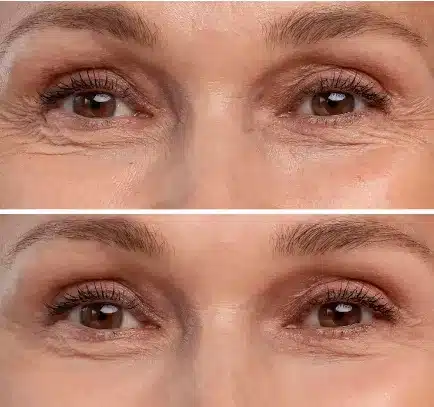
Summary
In conclusion, under-eye fat transfer stands as a valuable surgical technique in the realm of facial rejuvenation and aesthetic enhancement, particularly for addressing hollow under eyes and achieving facial solmization. By utilizing harvested fat from the patient’s own body, this procedure offers a natural and long-lasting solution to rejuvenate the under-eye area and enhance overall facial contours. The surgical technique involved in under-eye fat transfer requires precision and expertise to ensure optimal results, emphasizing the importance of selecting a qualified and experienced surgeon who can skillfully perform the procedure while minimizing risks and maximizing patient satisfaction.
With advancements in fat grafting techniques and surgical technology, under-eye fat transfer continues to evolve, offering patients tailored solutions to their cosmetic concerns. By effectively harvesting and strategically injecting fat, surgeons can achieve subtle yet significant improvements in facial appearance, promoting facial rejuvenation and enhancing aesthetic outcomes for individuals seeking to address hollow under eyes and achieve facial solmization. As the popularity of under-eye fat transfer grows, ongoing research and innovation in the field will further refine surgical techniques and expand the possibilities for facial rejuvenation and aesthetic enhancement.
Clinic contact number: +989371200167
FAQs
1. How long do the results of under eye fat transfer last?
The longevity of results varies from person to person. While the body may reabsorb some fat cells, a significant portion can survive long-term. On average, the results of under eye fat transfer can last several years.
2. Is under eye fat transfer suitable for everyone?
Under eye fat transfer is generally suitable for individuals with hollowing, volume loss, or dark circles in the under-eye area.
3. Who is a good candidate for under-eye fat transfer?
Good candidates for under-eye fat transfer are individuals with hollow or sunken areas under the eyes who desire a natural and long-lasting solution for rejuvenating the under-eye area. Candidates should be in good overall health and have realistic expectations about the outcomes of the procedure.
4. What are the benefits of under-eye fat transfer?
Under-eye fat transfer offers several benefits, including improved contour and symmetry of the under-eye area, reduced appearance of dark circles and hollows, and long-lasting results compared to temporary fillers.
5. What is the recovery process like after under-eye fat transfer?
The recovery process after under-eye fat transfer involves some swelling, bruising, and discomfort in the treated area. Patients are typically able to resume normal activities within a week, although strenuous exercise and activities should be avoided for a few weeks to allow for proper healing.
Fat Injections Under Your Eyes – How to Do It Right (drkopelman.com)
